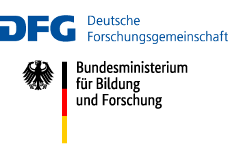Analysis and modelling the coating of solid particles
Financing
Deutsche Forschungsgemeinschaft
Projecttitle
Analysis and modelling the coating of solid particles
Projectleader
Prof. Dr.-Ing. habil. Martin Sommerfeld
Realized by
-
Keywords
Solid particles, Euler/Lagrange Approach, coating
Short description of the project
In the frame of the research project it is planned to analyse the fundamentals and to derive models for the collision of droplets with larger solid particles and their coating for Euler/Lagrange calculations. The elementary process of collisions between droplets and larger solid particles will be analysed experimentally using imaging techniques. For that purpose a droplet chain will be produced into which solid particles are shot with defined velocity and frequency. As a result of the collision of droplets with larger particles one may observe bouncing, deposition or disintegration. The collision event will be visualised using high-speed cameras and illumination by LED-arrays and a laser. The results will be analysed by image processing.
For all the relevant parameters of influence it is first required to determine the outcome of the collision and summarise them with respect to the important non-dimensional numbers, e.g. Ohnesorge-number and impact Reynolds-number. The considered parameters of influence are the size ratio (droplet/particle), droplet liquid properties (viscosity and surface tension), particle properties (temperature and surface roughness), impact velocity and impact location of the droplet on the particle surface (i.e. central and lateral impacts). As mentioned before, the droplets are smaller than the particles and the liquid is wetting. All these effects need to be considered for deriving physically-based boundaries between the collision outcomes using the relevant non-dimensional numbers. For the regime splashing or partial deposition the size distribution of the droplet fragments also will be analysed and modelled.
The next step is the experimental determination of the dimensions of the final liquid film on the particles, including film thickness and lateral dimension of the film. For that purpose the droplet liquid will be doped with fluorescing dye in order to allow a better distinction from the image of the particle. For the development of the coating model with respect to the impact conditions and the relevant non-dimensional numbers, physically based correlations shall be developed.
In addition, for analyzing the collision outcomes, theoretical studies will be conducted based on an energy balance. The liquid film formation on the particle will be studied based on film theory.
The developed coating model, which considers a broad range of parameters and also for the first time lateral impact, will be derived for being used in the frame of Lagrangian calculations of technical coating processes.






